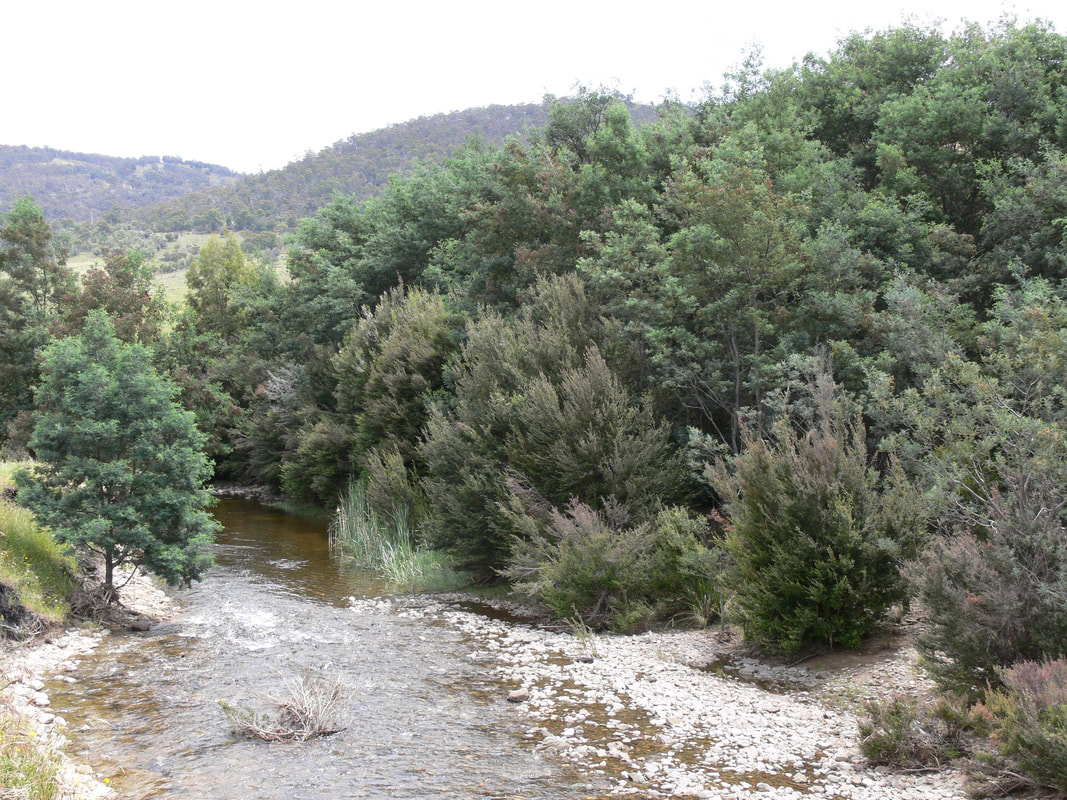Plants that grow along rivers and streams, are our unsung heroes. They are our first line defence workers, , facing the fury of a flood, the weight of water, and the onslaught of the flood debris hurled at them. Tea-tree and melaleuca, often line rivers and streams. Rather than standing up to fight the floodwater, their mantra is Go With the Flow. They bend under the weight of the water and allow the torrent to flow over them, waiting patiently for the floodwaters to subside.
Tea-tree and melaleuca have a secret weapon to withstand floods, making them specialists in erosion control. They have a mass of tiny roots, like thousands of fingers gripping to the riverbank. Tall trees with larger, longer roots, are at a disadvantage compared to these smaller plants. They are unable to Go With the Flow, but have to stand and face the full fury of the river and so often lose their lives.
Piping and straightening rivers and streams, may appear to be a management solution to keep them manicured, tidy and controlled, but this causes more problems than it solves. Rivers and streams have an energy, a life force of their own. This energy increases as it hits the outside of a bend, then decreases as the water moves to the inside of the bend, allowing the river or stream to snake its way through the landscape. This means rivers and streams aren't straight, but sinuous, gaining and losing momentum, a rhythm that moves the water on its meandering journey to meet the ocean. When rivers and streams are straightened or piped, that energy is concentrated, bottled up with resentment, exploding in rage at the end of the pipe causing erosion. In the scheme of things, a small stream may seem insignificant, but each stream is a thread in a greater tapestry, connecting communities of people, plants and animals. What happens on your stream affects those properties downstream.
And like our own life force flowing within us, it doesn't take a straight course, but bumps along the stream banks of life, teaching us lessons on its way. We see life with different perspectives, angles, viewpoints, with each bend navigated in the river of life. And if we can Go With the Flow, life takes a more meandering course.
Tea-tree and melaleuca have a secret weapon to withstand floods, making them specialists in erosion control. They have a mass of tiny roots, like thousands of fingers gripping to the riverbank. Tall trees with larger, longer roots, are at a disadvantage compared to these smaller plants. They are unable to Go With the Flow, but have to stand and face the full fury of the river and so often lose their lives.
Piping and straightening rivers and streams, may appear to be a management solution to keep them manicured, tidy and controlled, but this causes more problems than it solves. Rivers and streams have an energy, a life force of their own. This energy increases as it hits the outside of a bend, then decreases as the water moves to the inside of the bend, allowing the river or stream to snake its way through the landscape. This means rivers and streams aren't straight, but sinuous, gaining and losing momentum, a rhythm that moves the water on its meandering journey to meet the ocean. When rivers and streams are straightened or piped, that energy is concentrated, bottled up with resentment, exploding in rage at the end of the pipe causing erosion. In the scheme of things, a small stream may seem insignificant, but each stream is a thread in a greater tapestry, connecting communities of people, plants and animals. What happens on your stream affects those properties downstream.
And like our own life force flowing within us, it doesn't take a straight course, but bumps along the stream banks of life, teaching us lessons on its way. We see life with different perspectives, angles, viewpoints, with each bend navigated in the river of life. And if we can Go With the Flow, life takes a more meandering course.

 RSS Feed
RSS Feed